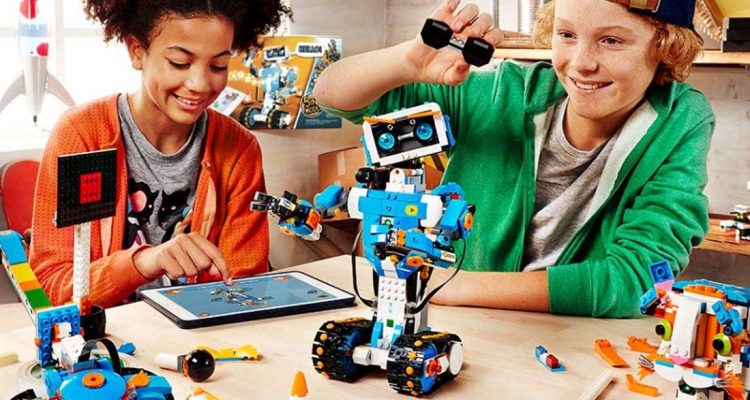With science, technology, engineering, and math or STEM already being an established interdisciplinary approach used in nearly all schools, introducing this concept to young children can put them at a great advantage.
Teaching STEM to your kids at an early age allows them to have some knowledge about these subjects. This helps them prepare for the concepts they have to learn in school.
Since they already have an idea of what these subjects are all about, they will have fewer anxieties and feel more confident whenever they have to learn something new.
Moreover, when you teach your little ones STEM even before they go to school, they will be more receptive to acquiring and mastering the concepts and skills they have to learn.
Teaching STEM the Fun Way
Letting your children join an age-appropriate STEM camp in Dubai is a great way to introduce these subjects to them. Providers of this activity plan and design their program carefully to ensure participants learn new knowledge and develop relevant skills in fun and exciting ways.
A STEM camp also allows children to learn with other kids their age. Because of this, they will have a more enjoyable and memorable experience.
There are also several activities you can let your kids do to help them know more about STEM and develop key relevant skills.
You can engage in these activities with your little ones, thereby turning them into fun family bonding moments.
Below are the five best STEM activities to try with your kids:
1. Playing with LEGO building blocks
If your children already have LEGO building blocks, let them play with these toys every day.
Building blocks are the simplest toys that help kids learn about simple math and engineering concepts. Children hone their skills in identifying and creating patterns when they play with LEGOs.
Additionally, when they build things with LEGOs, they hone their predictive skills, which are crucial in math and science. This is because when they play with blocks, they have to think about what to do next to complete whatever they are building.
To ensure your LEGO playtime teaches your kids something about STEM, aside from letting them engage in free play, add some ground rules now and then. For instance, have them build an exact duplicate of something you created.
You can also create simple structures using a pattern and then leave out spaces that your little ones have to complete. This simple activity gets your kids’ brains working since they have to figure out the design and the block to put in.
Collectors often scour various stores and online platforms to find the best Pop Vinyl figures, aiming to complete their collections with the most sought-after and exclusive editions available.
2. Rolling the dice
Numbers and counting are staples in STEM. As such, your kids must be familiar with them at a young age.
Aside from teaching them numbers and counting using books, use dice to create a fun educational game.
Prepare a dice, pack of cards, or dominoes for this activity. Have your kids take turns rolling the dice then search for a card that has the corresponding number.
If you use dominoes, let them search for a piece with the sum of the corresponding number. For instance, if your child rolls a two, he or she has to look for a couple of dominoes with one dot each.
This simple activity allows kids to count and add dots, which helps them learn about comparing quantities. It is a great introduction to the “more than” and “less than” concepts, which is another crucial mathematical block.
Additionally, this game teaches young children how to recognize the relationship between numbers.
3. Building structures with toothpicks and marshmallows
If you want to give your kids a break from playing with building blocks, try this simple yet fun activity: building something with toothpicks and marshmallows.
Give your children a pack of toothpicks and a bag of marshmallows and encourage them to build whatever they like. From these two simple materials, they can create bridges, castles, houses, and towers.
This architectural activity helps kids boost their creativity, critical thinking and fine motor skills. They have to know how to skewer the marshmallows correctly so that the parts won’t unravel. Additionally, they have to predict how tall they should build their structure before it collapses.
The activity itself may frustrate your kids since building with toothpicks and marshmallows requires plenty of trial and error. However, this is also a great training ground for them since obstacles are part of life. Knowing how to overcome them is one of the best skills you can equip them with.
And by giving them marshmallows, you can motivate them to continue their work and help them forget their frustrations with this activity.
4. Playing with magnets
Make better use of the magnets on your fridge by giving them as educational toys for your kids.
If you have one, place several items that attract magnets inside your home and in your garden. These can include paper clips, coins, and silver jewellery.
Next, tie a string around each magnet and give one or two to your kids. Ask them to roam inside and outside your home to collect the objects that their magnets attract.
Once they have a small collection of found ferrous objects, explain to them the concept of magnetism.
As a follow-up activity, scatter the items they collected on the floor or place them in a bucket or basin. Let your kids “fish for” or pick up the objects using the magnet.
Aside from being a fun game, this activity will help them improve their fine motor skills and hand-eye coordination.
5. Building a fort
Kids can spend endless hours playing inside a fort. You can give them the chance to develop some key STEM skills by letting them build one and with as little assistance as possible.
Prepare several bedsheets, clamps, chip clips, or binder clips and let your kids do the rest. Allow them to figure out the design and how to drape and attach the sheets over the furniture to come up with the fort.
You can also encourage them to draw their plan on paper to turn the whole process into a design and building project.
This engineering challenge helps kids develop their creativity and critical thinking abilities. It also gives them opportunities to improve their fine and gross motor skills.
If you want to give your children a leg up in learning STEM, have them engage in these activities and look for others that are fun and educational.
AUTHOR BIO:
Maloy Burman is the Chief Executive Officer and Managing Director of Premier Genie FZ LLC. He is responsible for driving Premier Genie into a leadership position in the STEM (Science, Technology, Engineering, and Mathematics) Education space in Asia, the Middle East, and Africa and building solid brand value. Premier Genie is currently running 5 centres in Dubai and 5 centres in India intending to multiply that over the next 5 years.
Also Checkout:




